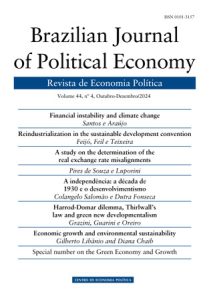Considerations on currency reform in Germany
after World War II
Judyta Przyluska-Schmitt, Dorota Jegorow, Tamás Szigetvári
Vol. 44 No. 4 (2024) Oct-Dec / 2024 – Published October 8, 2024
Abstract
This article is theoretical and presents the currency reform of June 20, 1948, which laid the basis for the reconstruction and rebirth of the West German economy after World War II. The authors analyze the conditions related to the need to carry out the reform, emphasizing the role and interests of the United States in this undertaking. It is widely believed that the reform gave rise to impressive economic growth, the so-called “economic miracle” that no one could have predicted before. A closer analysis, however, shows that the initial aim was not to pave the way for an economic miracle, but it was rather a meticulously prepared plan of action by the American superpower to strengthen its position in the world and limit the influence of the socialist idea. Therefore, this paper seeks to explore the hypothesis that the currency reform in post-WWII Germany was primarily aimed at securing American dominance and limiting Soviet influence.
Keywords: Currency reform; political economy; monetary policy; Germany; World War II



